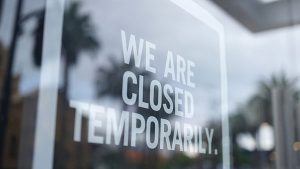
Background: The COVID-19 crisis has led to historically unprecedented increases in the level of initial Unemployment Insurance (UI) claims filed in California since the start of the crisis in mid-March. Through a partnership with the Labor Market Information Division of the California Employment Development Department, the California Policy Lab is analyzing daily initial UI claims to provide an in-depth and near real-time look at how the COVID-19 crisis is impacting various industries, regions, counties, and types of workers throughout California.
The Policy Briefs are updated on a monthly basis.
Return to the main report page to see all of the policy briefs, data points, and media coverage.
September 15th, 2020 Policy Brief
By
REPORT: September 15th Analysis of Unemployment Insurance Claims in California During the COVID-19 Pandemic ![]()
PRESS RELEASE: New Analysis: California Unemployment Claims Surged in August, Driven in part by Questionable Increase in PUA Claims
Key Research Findings
1. California saw a surge in initial claims for PUA in August that led to the highest weekly count since the start of the PUA program. A steep upward trend in initial claims between August 16th andAugust 29th was driven by a surge in PUA claims, with well over twice as many new PUA claims filed in the week ending August29th than were filed just two weeks prior. EDD has stated concerns that a recent increase in fraudulent PUA claims may be contributing to this surge.
2. The spike in initial claims during August coincided with a shift in demographics. Relative to July, new claimants are older and more educated, and the racial composition of claimants is also shifting towards more White claimants and fewer Hispanic claimants. The shift towards older, more White claimants is driven both by an increasing share of PUA claimants, and a demographic shift within the group of PUA claimants.Notably, there were also similar (albeit smaller) shifts in the demographic profile of regular UI claimants – a trend less likely to be influenced by fraudulent claims.
3. A dramatic and recent increase in the number of payments processed each week (often called “Continuing Claims”) has been driven by a rise in claimants certifying retroactively for multiple weeks of benefits. This means the number of continued claims in recent weeks is considerably greater than the number of people actually receiving payments for unemployment experienced in those same weeks.
4. The increase in retroactive payments has been primarily driven by new PUA claimants certifying for benefits for weeks of unemployment experienced back to the earlier stages of the crisis. The average number of payments each PUA claimant has certified for has risen from about four weeks in June to over eight weeks of payments more recently.
5. Exit rates have been substantially higher among claimants who had reported they expected to be recalled to work by their employers. During May and June, about 5% of claimants who indicated they expected to be recalled to their old positions exited UI each week, compared to only 3% of claimants who indicated they did not expect to be recalled.
6. Similarly, exit rates have been significantly lower for individuals claiming PUA benefits than those participating in the regular UI system
7. While improving, the picture is still concerning in CA, with over 3.5 million claimants, or 19% of the state’s labor force, being paid benefits for unemployment experienced in the week ending August 15th.
